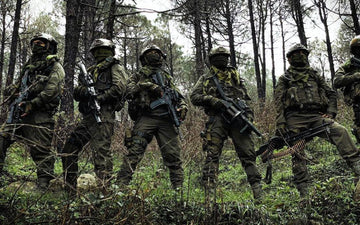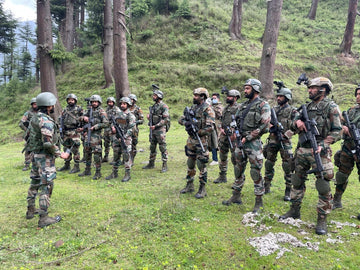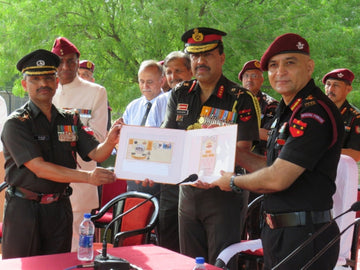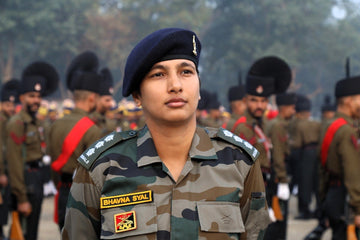The Indian Air Force (IAF) has undergone remarkable transformations over the years, evolving into one of the most formidable air forces in the world. With a commitment to safeguarding the nation's sovereignty and maintaining regional stability, the IAF operates a diverse range of fighter jets that harness cutting-edge technology and advanced capabilities. This article delves into six types of fighter jets prominently featured in the IAF's inventory, exploring their specifications, roles, and contributions to the nation's defence ecosystem.
Historical Context
The evolution of the Indian Air Force has been shaped by geopolitical dynamics and technological advancements. Established in 1932, the IAF initially operated biplanes and had limited combat capabilities. The pivotal moments in its history include the induction of Soviet-era aircraft during the Cold War, which significantly augmented the IAF's strength. In recent years, the IAF has increasingly focused on modernizing its fleet with multirole fighters capable of engaging in various combat scenarios. This ongoing transformation highlights the IAF’s commitment to maintain strategic deterrence and operational readiness.
1. Rafale: The Multirole Powerhouse
Overview
The Rafale is a French multirole fighter jet that was inducted into the Indian Air Force in July 2020. Designed for a wide range of missions, it is equipped with state-of-the-art avionics, including an Active Electronically Scanned Array (AESA) radar. With its capabilities in air superiority, ground attack, and reconnaissance, the Rafale serves as a pivotal component of India's aerial warfare strategy.
Specifications and Features
- Role: Multirole (air superiority, ground attack, reconnaissance)
- Engines: Two SNECMA M88 engines
- Maximum Speed: Approximately 1,390 km/h
- Range: 3,700 km with a full payload
- Weapons: Capable of carrying a versatile array of munitions, including nuclear weapons, precision-guided missiles, and advanced air-to-air missiles.
Impact on Indian Air Force
The Rafale's induction has significantly enhanced the IAF's operational capabilities, providing it with advanced electronic warfare systems and superior maneuverability. Its role became particularly evident during exercises, wherein it demonstrated high precision strike capabilities, bolstering India's deterrent posture in the region.
2. MiG-21: The Iconic Legacy
Overview
The MiG-21, a legacy Soviet-era fighter, has been a mainstay in the IAF for several decades. Although it represents one of the oldest aircraft still in service, it serves a crucial role in various combat operations, primarily as a light interceptor and ground attack aircraft.
Specifications and Features
- Role: Interceptor, ground attack
- Engines: A single Tumansky R-11 turbojet
- Maximum Speed: Approximately 2,175 km/h
- Range: 1,200 km
- Weapons: Includes a mix of air-to-air and air-to-ground armaments.
Impact on Indian Air Force
Despite its age, the MiG-21 has proven its mettle in numerous conflicts and has been instrumental in establishing India’s air defence capabilities. The aircraft’s operational longevity highlights the adaptability and reliability of Soviet engineering during its time.
3. MiG-29: The Air Superiority Fighter
Overview
The MiG-29, another key player in the IAF’s arsenal, is renowned for its air superiority capabilities. This Soviet/Russian-origin fighter jet has undergone numerous upgrades to meet modern combat requirements, ensuring sustained relevance on the battlefield.
Specifications and Features
- Role: Air superiority
- Engines: Two RD-33 turbojet engines
- Maximum Speed: Approximately 2,400 km/h
- Range: 2,100 km with drop tanks
- Weapons: Equipped to carry a diverse selection of missiles, including R-73 and R-77 for air-to-air engagements.
Impact on Indian Air Force
The MiG-29 has enhanced the IAF’s ability to engage and defeat enemy aircraft across various combat scenarios. The Indian upgrade programs have introduced modern avionics and weapons systems, elevating its status in the contemporary aerial warfare environment.
4. Mirage 2000: Versatility Embodied
Overview
In service since the 1980s, the Mirage 2000 is another French multirole fighter that holds a notable place in the IAF’s inventory. Renowned for its agility and versatility, the aircraft has seen significant upgrades that have modernized its capabilities.
Specifications and Features
- Role: Multirole (air superiority, ground attack)
- Engines: A single SNECMA M53-P2 engine
- Maximum Speed: Approximately 2,400 km/h
- Range: 3,000 km
- Weapons: Capable of deploying nuclear weapons and a broad range of precision-guided munitions.
Impact on Indian Air Force
The Mirage 2000 played a key role during the Kargil War of 1999, showcasing its capabilities in precision strikes against enemy positions. Its continual upgrades ensure that it remains an effective platform for the IAF, contributing to high-stakes missions and deterrence strategies.
5. Sukhoi Su-30MKI: The Advanced Multirole Fighter
Overview
The Sukhoi Su-30MKI is one of the most advanced jets in the IAF's fleet, combining Russian origin with indigenous design elements. It exemplifies a unique step in India’s focus on self-reliance in military aviation.
Specifications and Features
- Role: Multirole fighter
- Engines: Two AL-31F engines
- Maximum Speed: Approximately 2,200 km/h
- Range: 3,000 km
- Weapons: Equipped with an extensive range of armaments, including BrahMos missiles, and advanced air-to-air and ground attack munitions.
Impact on Indian Air Force
The Su-30MKI enhances the IAF's deterrent capabilities, offering advanced avionics for strike missions and air superiority. Its unique design allows for exceptional agility and combat performance, making it a formidable force against potential adversaries.
6. HAL Tejas Mk-1A: The Indigenous Light Combat Aircraft
Overview
The HAL Tejas Mk-1A is India’s foray into developing a lightweight, multirole fighter jet. Considered a 4.5 generation aircraft, it marks a significant achievement in indigenization of military technology and showcases India’s growing engineering capabilities.
Specifications and Features
- Role: Multirole (air superiority, ground attack)
- Engines: A single General Electric F404 engine
- Maximum Speed: Approximately 1,800 km/h
- Range: 2,000 km
- Weapons: Equipped with an AESA radar and a diverse set of weapons tailored for multi-domain operations.
Impact on Indian Air Force
The Tejas Mk-1A is expected to address several gaps in India’s aerial combat capabilities, especially in terms of cost-efficiency and logistics. With the order of 83 aircraft from the Indian government, the Tejas marks a significant step towards self-reliance in defence manufacturing.
Future Developments
India is poised to make substantial advancements in its air defence capabilities with the development of the Advanced Medium Combat Aircraft (AMCA). Spearheaded by the Aeronautical Development Agency, the AMCA aims to incorporate fifth-generation stealth technology, advanced avionics, and superior performance metrics that can rival platforms like the F-22 Raptor and F-35 Lightning II. The emergence of this program reflects India’s commitment to bolster its aerial combat capabilities and reduce reliance on foreign platforms.
Challenges and Solutions
The IAF faces several challenges in modernizing its fleet and maintaining operational readiness. These include:
- Technological Gaps: Bridging the technological divide with advanced air forces globally.
- Budget Constraints: Sustainable funding and investment in new technologies.
- Upgrades and Maintenance: Ensuring existing aircraft remain combat-ready through upgrades and regular maintenance.
To address these challenges, the IAF must further invest in indigenous capabilities, collaborate with private sector manufacturers, and enhance its research and development efforts. Fostering partnerships with foreign military technology developers will also play a critical role in mitigating these challenges.
Conclusion
The Indian Air Force stands at a crucial crossroad, with its diverse fleet of fighter jets reflecting both its storied past and dynamic future. From the iconic MiG-21 to the cutting-edge Rafale and the indigenous Tejas, each aircraft contributes uniquely to the IAF’s multi-faceted operational prowess. With continuous upgrades, indigenization efforts, and future advancements like the AMCA, the IAF is not only enhancing its engagement capabilities but also showcasing its commitment to national security and technological self-reliance. Ensuring the sustained effectiveness of its aerial fleet will be paramount as India navigates a complex geopolitical landscape, underscoring the importance of a robust and versatile air force. The journey ahead is one that promises to further solidify India's standing as a significant player in global military aviation.





